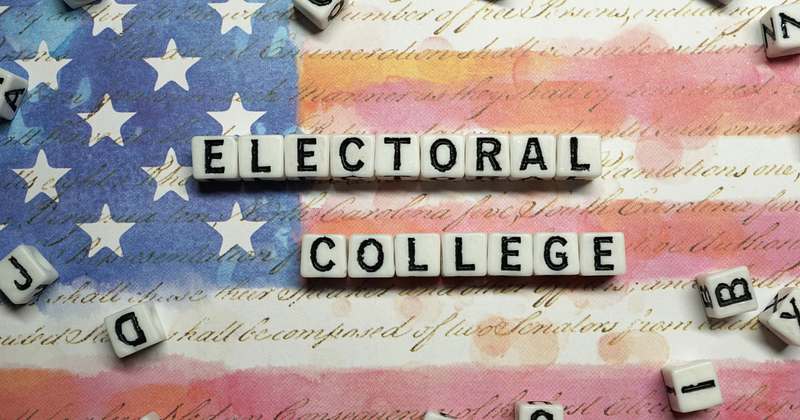Electoral College and the Popular Vote (Part 1 of 3)
Born of compromise and enshrined in the U.S. Constitution, the Electoral College isn’t a place. It’s a temporary voting body that elects the president of the United States. When voters select their presidential and vice-presidential candidates on Election Day, they’re actually choosing the members of this body who will cast votes on their behalf in the days and weeks after the election.
For the past 233 years, this confusing and contentious institution has split opinions and overseen some truly rocky presidential elections. It has elected five presidents who didn’t win a majority of American votes and resulted in one tie. And though most electors vote for their pledged candidates, some have historically gone back on their promises.
In the 2020 election, there will be 538 electors. To win the election, a candidate must win a majority — 270 electoral votes.
Though a candidate usually declares victory or concedes on Election Night, the returns reported by the media immediately after the election are only preliminary. The official count comes later, when the electors cast their official votes.
After Election Day, which takes place on the first Tuesday after the first Monday in November, states use the remainder of November and December to gather, certify, and send their electors’ formal votes for president and vice president to the National Archives and Records Administration, which administers the Electoral College. (December 14, 2020: Electoral College Delegations Meet and Vote, Monday after the second Wednesday in December of presidential election years is set as the date on which the electors meet and cast their votes.)
The Electoral College and the Popular Vote (Part 2 of 3)
After state election officials certify the popular vote of each state, the winning slate of electors meets in each state capital and casts two ballots — one for president and one for vice president.
In July, in a little-noticed decision, the US Supreme Court unanimously upheld laws that allow state election officials to remove or punish “faithless” electors. In the modern era, very rarely have electors voted for someone other than for whom they pledged. Faithless electors have never decided a presidency. Given the Supreme Court’s decision, faithless electors are not likely to alter the outcome this year either. That is not the problem on the horizon.
The Electoral College would allow a candidate to win a majority of the popular vote and lose the election four more times in history — in 1876, 1888, 2000, and 2016.
Is Electoral College Reform Possible? (Part 3 of 3)
According to the National Archives, more than 700 proposals to reform or abolish the Electoral College have been introduced to Congress in the past two centuries. These proposals aim to address the many factors that allow a candidate to win the majority of votes and not the presidency as well as various biases within the system.
Although the framers specifically intended to ensure less populous states had a say in elections, critics claim sparsely populated states now have an unfair advantage. By guaranteeing every state at least two electoral votes to match its senatorial representation, the system gives small states more electoral votes per capita. For example, the least populous state, Wyoming, had one electoral vote per 195,000 people in the 2016 election — and California, the most populous, had one per 712,000 people.
Legal scholars note that this bias toward small states has played a decisive role in three elections, most recently in 2000. Had Electoral College votes in that election been allocated by population without the two-vote Senate bump, Gore would have defeated Bush 225 to 211.
Proponents of the Electoral College argue that the system allows states to check the power of the national government and averts the possibility of nationwide recounts that could throw elections into chaos. Rather than lament the system’s bias toward small states, they argue it encourages candidates to campaign outside of highly populated urban areas.


